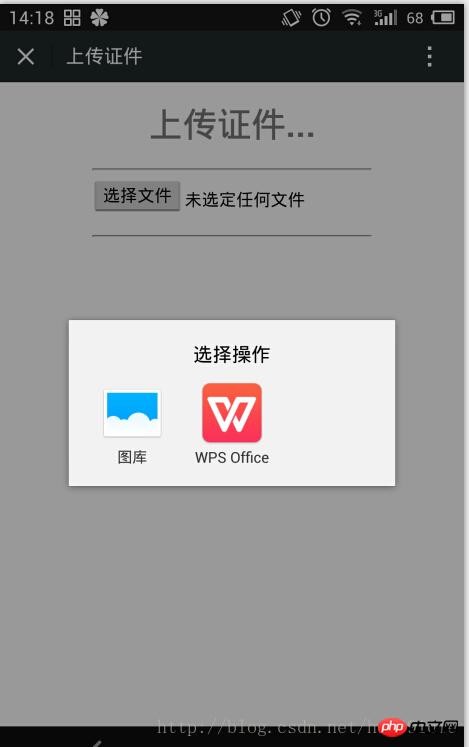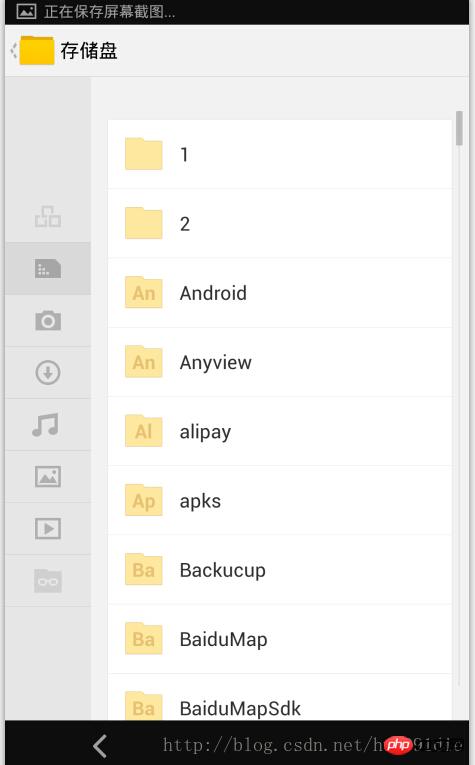
This article mainly introduces HTML5+Canvas and jquery technology in detail, and calls the mobile phone camera function to upload pictures. It has a certain reference value. Interested friends can refer to it
because Recently, I have been working on a WeChat project, which involves the function of uploading documents. At the beginning, I had no clue at all. I checked a lot of information online and asked many people in the QQ group. Many people said that if it is an app program , you can apply for system permissions, and then call the underlying things of the system, but WeChat operates in the browser, and our customized pages are also opened through the WeChat built-in browser, and the WeChat browser performs a lot of special processing internally , blocks a lot of things, so it is impossible to call the camera function on the page or open the gallery directory of the mobile phone system. Of course, these are just everyone's theoretical guesses, and after I checked the information for two days, I found that this problem can be solved, and the implementation process is actually very simple. It just uses the file upload function of HTML5 and cooperates with canvas. The source code is attached below:
<html>
<meta name="viewport" content="height=device-height, width=device-width, initial-scale=1.0, minimum-scale=1.0, maximum-scale=1.0, user-scalable=no">
<meta name="format-detection" content="telephone=yes">
<head>
<meta charset="UTF-8">
<title>上传证件</title>
<style>
body {
margin: 20px 20%;
color:#777;
text-align: center;
}
#result{
margin-top: 20px;
}
</style>
</head>
<body>
<h1 class="text-center">上传证件...</h1>
<hr/>
<input type="file"/>
<p id="result" align="center"></p>
<hr/>
<!-- 引入jQuery -->
<script type="text/javascript" src="../js/jQuery/jquery-1.9.1.min.js"></script>
<script type="text/javascript" src="../js/LocalResizeIMG.js"></script>
<!-- mobileBUGFix.js 兼容修复移动设备 -->
<script src="../js/mobileBUGFix.mini.js" type="text/javascript"></script>
<script type="text/javascript">
$("input:file").localResizeIMG({
width: 500,
quality: 0.8,
success: function (result) {
var img = new Image();
img.src = result.base64;
console.log(result.clearBase64);
//$("body").append(img);
$("#result").empty();
$("#result").append(img); //呈现图像(拍照結果)
$.ajax({
url: "upLoadImageServlet",
type: "POST",
data:{formFile:result.clearBase64},
dataType: "HTML",
timeout: 1000,
error: function(){
alert("Error loading PHP document");
},
success: function(result){
//alert(result);
//console.log(result);
alert("Uploads success~")
}
});
}
});
</script>
</body>
</html>The process implemented above is as follows. First, the images are compressed on the front end. Because of different mobile phones, some mobile phones may be better at taking pictures. , the pixels are high, and the size of the taken pictures is relatively larger, so it is compressed through a plug-in, and then converted into Base64 encoding, and then the Base64 encoding is POSTed to the server using AJAX, and then performed in the Java or PHP background. Base64 decoding, the path solved is the path address of the uploaded image, and then stored and written to a file or database.
In addition, there is an issue that needs to be explained here: Many people have talked about WeChat’s built-in browser. I have always thought that WeChat’s built-in browser is a set of browsers developed by WeChat itself, and then for many things restrictions were imposed. In fact, this is not the case. WeChat itself did not develop a new set of browsers, but called the system's own browser, which changed according to different systems of the mobile phone. The built-in browser of WeChat calls the default browser of the mobile phone system. The default browsers of iOS and Android systems are both webkit kernels, but the degree of support for HTML5 and CSS3 may be different. Because the browser is only a part of the system, the system default browser will not be upgraded separately. The degree of support for HTM5 and CSS3 has a great relationship with the system version. The Android version of WeChat directly calls the system browser kernel, while the iOS version calls Safari. You can see that the effects of 1 and 3 below are exactly the same. 1 is opened by the WeChat browser, and 3 is the system browser that comes with Meizu MX 3. Open effect.
I have tested all the above and it can run normally. Attached are a few photos below:
1. This is the effect of opening it in WeChat


2. This is the effect when opened in the mobile UC browser:


3. This is The effect of opening it in the system's built-in browser (ps: my mobile phone is Meizu MX 3), but this does not open the system gallery directory, but directly locates the system's folder root directory.


The next article will talk about image upload operations in the Java background:
Introduction to HTML5+Canvas calling mobile phones The camera function enables image uploading (Part 2)
Students who need to learn h5 please pay attention to the php Chinese website h5 video tutorial, many h5 online video tutorials can be watched for free!
The above is the detailed content of Introducing HTML5+Canvas to call the camera function of mobile phone to upload pictures (Part 1). For more information, please follow other related articles on the PHP Chinese website!
 What are the production methods of html5 animation production?
What are the production methods of html5 animation production?
 The difference between HTML and HTML5
The difference between HTML and HTML5
 Solution to the problem that exe files cannot be opened in win10 system
Solution to the problem that exe files cannot be opened in win10 system
 python timestamp
python timestamp
 Douyin level price list 1-75
Douyin level price list 1-75
 How to get the input number in java
How to get the input number in java
 How about Ouyi Exchange?
How about Ouyi Exchange?
 What to do if postscript cannot be parsed
What to do if postscript cannot be parsed




